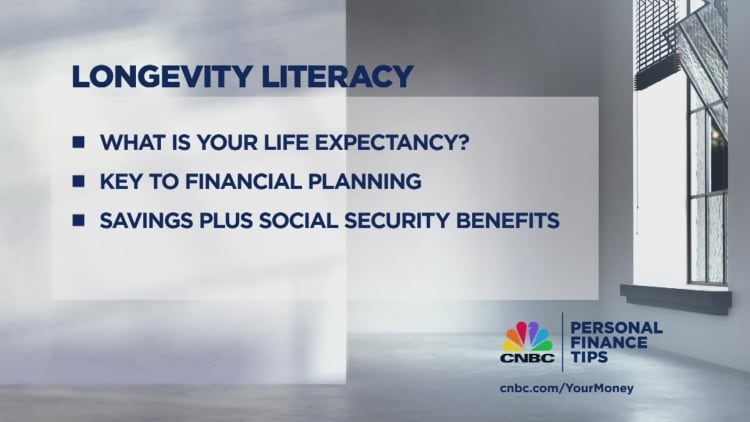[ad_1]
Supersizer | E+ | Getty Images
How term and permanent life insurance differ
Life insurance is a form of financial protection that pays money to beneficiaries, like kids or a spouse, if a policyholder dies.
“Term” insurance only pays out a death benefit during a specified term, perhaps 10, 20 or 30 years. Unless renewed, the coverage lapses after that time.
By contrast, “permanent” insurance policies — like whole life and universal life — offer continuous coverage until the policyholder dies. They’re also known as “cash value” policies since they have interest-bearing accounts.

Permanent insurance is generally more costly, advisors said. Policy premiums are spread over a longer time, and those payments are used to cover insurance costs and to build up cash value.
“Term insurance will probably be the most cost-effective way to address survivor income needs, especially for minor children,” said Marguerita Cheng, a CFP based in Gaithersburg, Maryland, also a member of CNBC’s Advisor Council.
Premiums can vary greatly from person to person. Insurers base them on a policy’s face value, and the policyholder’s age, gender, health, family medical history, occupation, lifestyle and other factors.
Reasons you may need permanent life insurance
There are three main reasons it may make more sense to buy a permanent policy, despite the higher premiums, said McClanahan, founder of Life Planning Partners. This would aim to ensure there’s an insurance payout upon death, no matter when that occurs.
For example: Some beneficiaries like kids with special needs may need financial help for a long time, and a policyholder’s lifetime savings wouldn’t be adequate to fund their needs, McClanahan said.
Some policyholders may also want to leave a financial legacy for family or charities. Additionally, others may have a relatively minor health complication with the potential to worsen later; at that point, the policyholder may be uninsurable — in which case it’d be beneficial to buy a permanent policy today to ensure coverage later, McClanahan said.
Most people just need term insurance.
Carolyn McClanahan
founder of Life Planning Partners
Some shoppers buy permanent life insurance for the cash value, thinking they can borrow against that cash value or use it as a retirement savings account. But that’s a “horrible reason” to buy a permanent policy, said McClanahan, adding that the primary reason for buying a policy is always for an insurance need.
For one, there may be taxes and penalties for accessing a policy’s cash value. And withdrawing or borrowing too much money from a permanent policy could cause the policy to lapse inadvertently — meaning the owner would lose their insurance.
Policyholders should instead treat the cash value as an emergency fund at the end of one’s life — as the last asset someone taps, similar to home equity, McClanahan said.
How to determine life insurance amount, term
Prospective buyers should consider the “three Ls” when deciding how much life insurance to get: liability, loved ones and legacy, said Cheng, CEO of Blue Ocean Global Wealth.
For example: If you die, how much money would you want to leave for liabilities like a mortgage, student loans or auto loans? How much money would loved ones like a spouse and kids need if they were to suddenly lose a policyholder’s income? How much would you want to leave as a legacy for causes that are important to you?
Thinking about these questions will help guide the term of a policy, Cheng said.
Cheng offered her personal situation as an example. She purchased a 20-year term policy with a $750,000 death benefit when all three of her kids were younger than age 18. Her husband also works and has a regular income; if Cheng were to have died prematurely, each child would have received $250,000 to fund their educations. She also bought $250,000 of permanent insurance, earmarked for Cheng’s husband, to help pay off their mortgage.
Coupling term and permanent insurance policies can help make an insurance purchase more cost-effective than buying just permanent insurance, advisors said.
Those buying a term policy should be sure to buy “convertible” term insurance, advisors said. This gives policyholders the option to convert their term policy into a permanent policy once the term has ended, but without having to undergo another round of medical underwriting; at that point, the person may be denied coverage if in poor health.
[ad_2]

